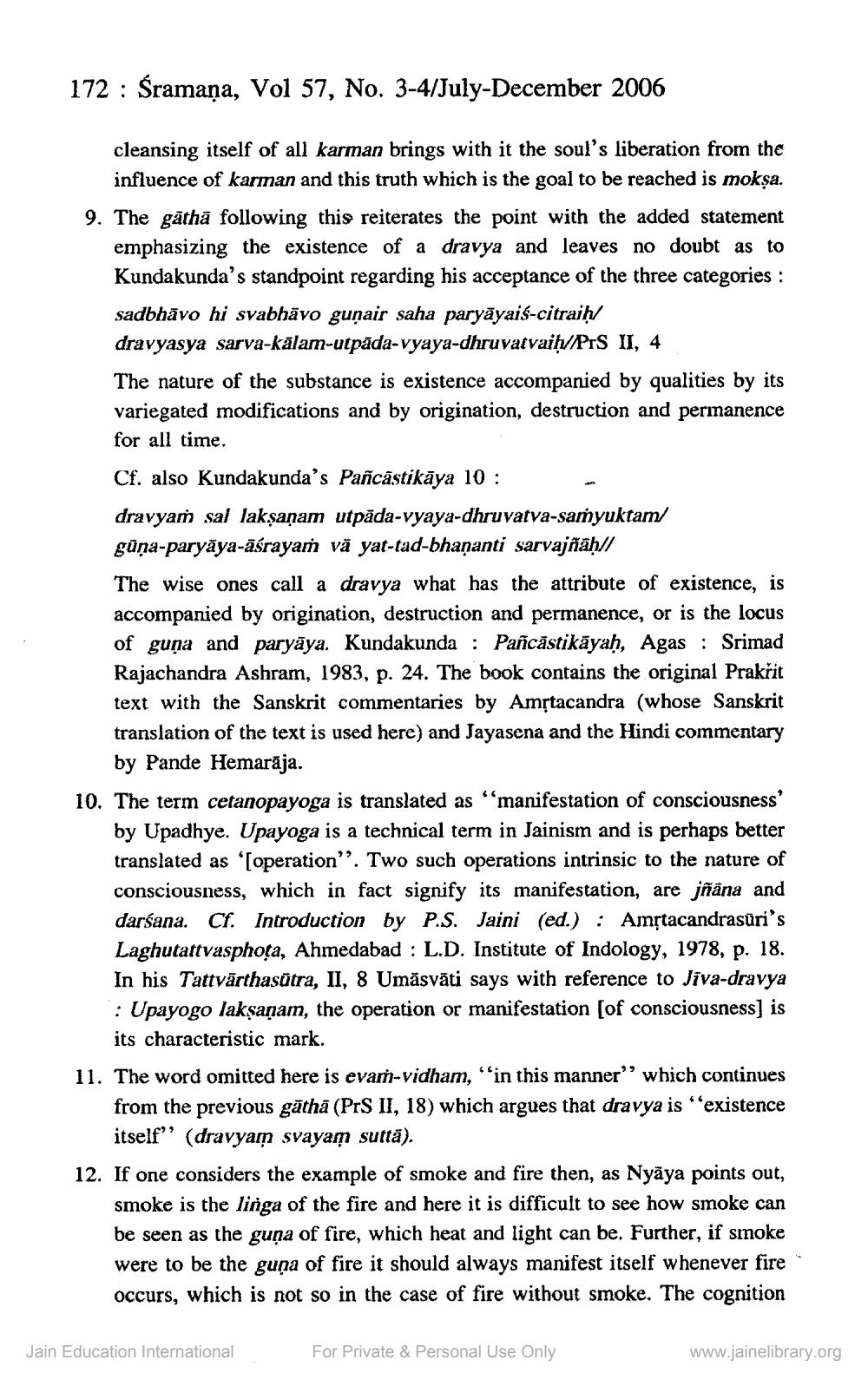________________
172 : Śramaņa, Vol 57, No. 3-4/July-December 2006
cleansing itself of all karman brings with it the soul's liberation from the
influence of karman and this truth which is the goal to be reached is mokșa. 9. The gāthā following this reiterates the point with the added statement
emphasizing the existence of a dravya and leaves no doubt as to Kundakunda's standpoint regarding his acceptance of the three categories : sadbhāvo hi svabhävo guņair saha paryāyais-citraiḥ dravyasya sarva-kalam-utpäda-vyaya-dhruvatvaih/PIS II, 4
The nature of the substance is existence accompanied by qualities by its variegated modifications and by origination, destruction and permanence for all time.
Cf. also Kundakunda's Pañcâstikāya 10 :
dravyaṁ sal laksanam utpăda-vyaya-dhruvatva-samyuktam güņa-paryāya-āśrayam vă yat-tad-bhananti sarvajñaḥ// The wise ones call a dravya what has the attribute of existence, is accompanied by origination, destruction and permanence, or is the locus of guna and paryāya. Kundakunda: Pañcăstikāyaḥ, Agas : Srimad Rajachandra Ashram, 1983, p. 24. The book contains the original Prakřit text with the Sanskrit commentaries by Amrtacandra (whose Sanskrit translation of the text is used here) and Jayasena and the Hindi commentary
by Pande Hemarāja. 10. The term cetanopayoga is translated as "manifestation of consciousness'
by Upadhye. Upayoga is a technical term in Jainism and is perhaps better translated as '[operation”. Two such operations intrinsic to the nature of consciousness, which in fact signify its manifestation, are jñāna and darśana. C1. Introduction by P.S. Jaini (ed.) : Amrtacandrasuri's Laghutattvasphota, Ahmedabad : L.D. Institute of Indology, 1978, p. 18. In his Tattvārthasätra, II, 8 Umāsvāti says with reference to Jiva-dravya : Upayogo laksanam, the operation or manifestation (of consciousness) is
its characteristic mark. 11. The word omitted here is evar-vidham, "in this manner" which continues
from the previous gāthā (Prs II, 18) which argues that dravya is existence
itself” (dravyam svayam suttä). 12. If one considers the example of smoke and fire then, as Nyāya points out,
smoke is the linga of the fire and here it is difficult to see how smoke can be seen as the guņa of fire, which heat and light can be. Further, if smoke were to be the guna of fire it should always manifest itself whenever fire occurs, which is not so in the case of fire without smoke. The cognition
Jain Education International
For Private & Personal Use Only
www.jainelibrary.org




